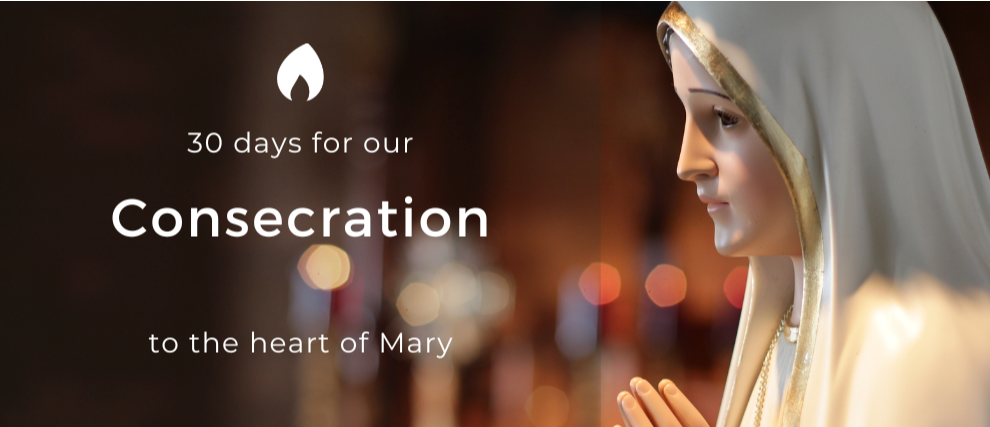Saint Elizabeth of the Trinity
Biography of Saint Elizabeth of the Trinity
Marie-Elisabeth Catez was born on July 18th, 1880 at the Avor military camp near Bourges, where her father was a captain. An impulsive and angry character, she was the eldest of two daughters. At the age of seven, her father died in her arms of a heart attack. The family was deeply marked by this mourning and moved to Dijon. Elisabeth went to the catechism and worked to curb her strong emotions by relying on Jesus. It was at the age of eight that Elizabeth first expressed her firm desire to become a nun. The following year, Elizabeth made her first communion and received a special grace to finally overcome her bad character. Soon after, she had her confirmation and her love for Jesus grew more and more. She was very pious. Entering the conservatory at the age of eight, Elizabeth had a great gift for music and dance and quickly attained an excellent piano level. She found time to participate in the activities of her parish, especially at the Mass, where Elisabeth devoted great admiration to her favorite saint: Saint Teresa of Avila.
At the age of 14 Elizabeth consecrated herself to Jesus: "I felt irresistibly moved to choose Jesus as my only husband, and without delay I bound myself to him by the vow of virginity." Soon after, it was the word "Carmel" that resonated in her ears and her desire to enter became very strong, although her mother firmly opposed this religious vocation. Elizabeth's youth was full of joy made up of social evenings, beautiful journeys, and solid friendships. Meanwhile, her desire to join the Carmelites grew, especially during a retreat preached by Redemptorist fathers. Her grieving mother did not hold her back anymore, and resolved to let her daughter go when she was 21. On August 2, 1901, under the name of Elizabeth of the Trinity, the girl entered the Carmelite order. She was satisfied, as she wrote to her sister: “Oh! How good is God! I can't find an expression to express my happiness, every day I appreciate it more. Here, there is nothing more, more than He, He is All, He suffices, and it is from Him alone that we live. It is found everywhere, in laundry as in prayer! Indeed, the community was struck by the intensity of her faith. On December 8, 1901, Elisabeth took the habit, an event she had long looked forward to. After these very enthusiastic first months with the Carmelites, the year of novitiate proved difficult. Elizabeth felt a spiritual dryness and anxieties. On January 11, 1903, she made her perpetual vows. Amongside her Carmelite sisters, Elizabeth was devoted and always sought to please each one. In 1904, she composed her famous prayer: “O my God, Trinity Whom I Adore.”
As early as 1905, Elizabeth's health began to decline and the origin of her illness was discovered: she was afflicted with Addison's disease, incurable at the time. She would experience great suffering, but despite great anguish, what dominated was her happiness in "effectively communing with her Master's Passion" and offering herself to Him. In 1906, she wrote two Retreats, one for her sister Marguerite, the other at the request of her prioress. Elizabeth died on November 9th, 1906. Beatified in 1984 by John Paul II, she was canonized on October 16, 2016 by Pope Francis. Along with Saint Teresa of the Child Jesus, of whom she is a contemporary, Saint Elizabeth of the Trinity gave new impetus to the order of Carmel.
Words and quotations of Saint Elizabeth of the Trinity
The spirituality of Saint Elizabeth of the Trinity is centered on the worship of God in His Three Persons and especially in the Blessed Sacrament. Throughout her life, Elizabeth developed a growing love for Christ, the Father, and the Holy Spirit. All the rest of what life offers of joys and pleasures became secondary for her, since she knew how to give God the first priority. Her entry into Carmel is the largest sign of this. Elisabeth wrote many letters to her friends and family, especially her mother and sister, with whom she formed an inseparable trio following the death of her father. This correspondence as well as the exchanges with the Mother Superior reveal to us Elisabeth's profound spirituality, the greatness of her soul, her drive towards God which continued all her life despite trials: the departure from home, the reality of Carmel, and illness.
Words of Elizabeth as a Child
"I loved prayer very much, and so much good God, that even before my first communion I did not understand that one could give one's heart to another; and, from then on, I was determined to love only Him and to live only for Him. ”
After her First Communion: "Since this mysterious conference, this divine, delicious conversation, I only aspired to give my life, only to give back a little of his great love to the Beloved One of the Eucharist who lay in my weak heart. ”
The Love of God in the Blessed Sacrament
“With Jesus, I would like to spend my life. Laying close to his Heart, makes me happy here on Earth. ”
The desire to be all God’s
“Jesus, my soul is jealous of you, I want to be your wife soon. With you I want to suffer, and die to find you. ”
"I love you so much, my heart burns with such love for you, that I cannot live quietly and happily, while you, my Beloved Spouse, suffer. Sharing your pains, softening them, carrying a very heavy cross, very heavy after you, that's all I want. For I love you, O my Life, I love you to death. "
Spiritual Tips: Quotes from Elizabeth of the Trinity
"Every minute is given to us to root ourselves in God."
“Always believe in love and always sing thank you”.
“Prayer is the bond of souls.”
“It's so simple, the divine Adorant is in us, so we have his prayer, let's offer it, let us communion, let us pray with his Soul!
The writings of Saint Elizabeth of the Trinity
Poems
There are 126 poems written by Saint Elizabeth, 75 of which were written before she entered the Carmel. Of the poems written in Carmel, most were written in the infirmary.
Letters
Elizabeth's correspondence consists of 346 letters. The majority were written after Elizabeth entered the Carmel, and therefore present the last five years of her life. In 1906, Elisabeth put her last efforts to address a long letter containing treasures of spiritual teaching to her dear friend, Françoise de Sourdon.
Diary
Like many girls of her time, Elizabeth wrote a diary. These are five notebooks, of which only the last three remain, the other two having been burned by Elizabeth who undoubtedly considered them too personal.
Last Retreat
In 1906, although she was in the infirmary, Elisabeth, like every year, took a period of personal retreat. Feeling her coming end, the Mother Superior offered to write down "the lights of her retreat." Elisabeth wrote a small, hundred-page book that she gave to her Prioress.
Last Retreat to Her Sister
Also in 1906, while Elizabeth was suffering from the illness that would prevail three months later, She wrote a small notebook for her sister Marguerite, a collection of personal meditations. She wanted to offer her younger sister this last surprise, feeling the responsibility of a spiritual mother towards her little sister.
Prayer to Saint Elizabeth of the Trinity
The famous prayer of Saint Elizabeth of the Trinity: O my God, Trinity Whom I Adore.

